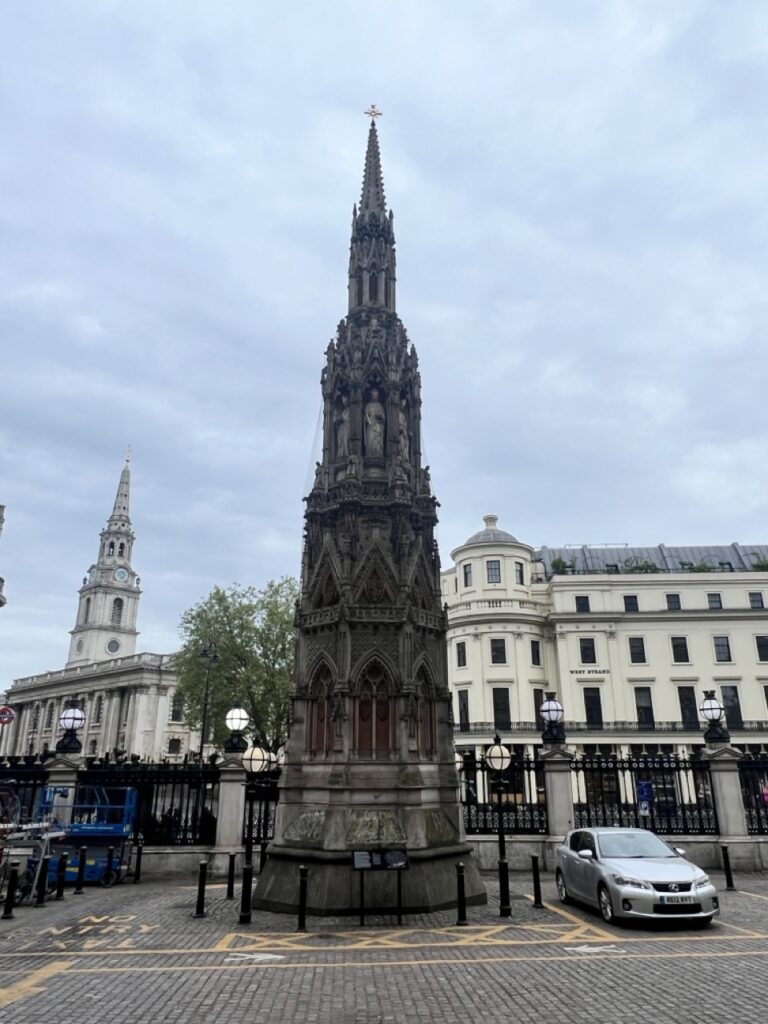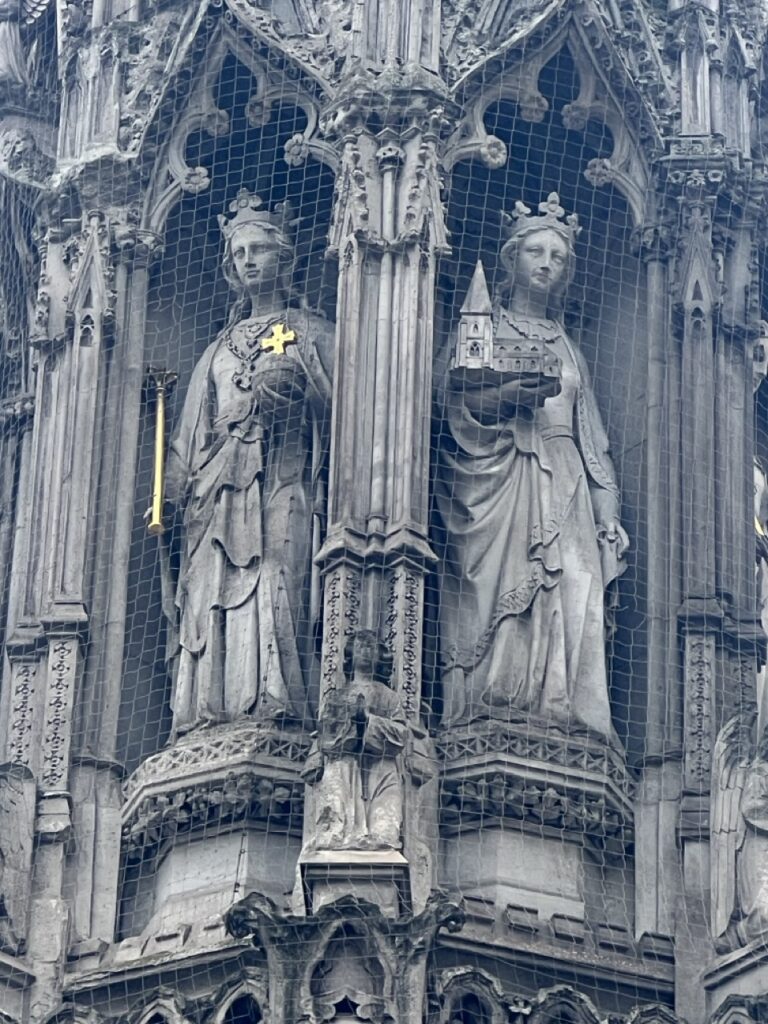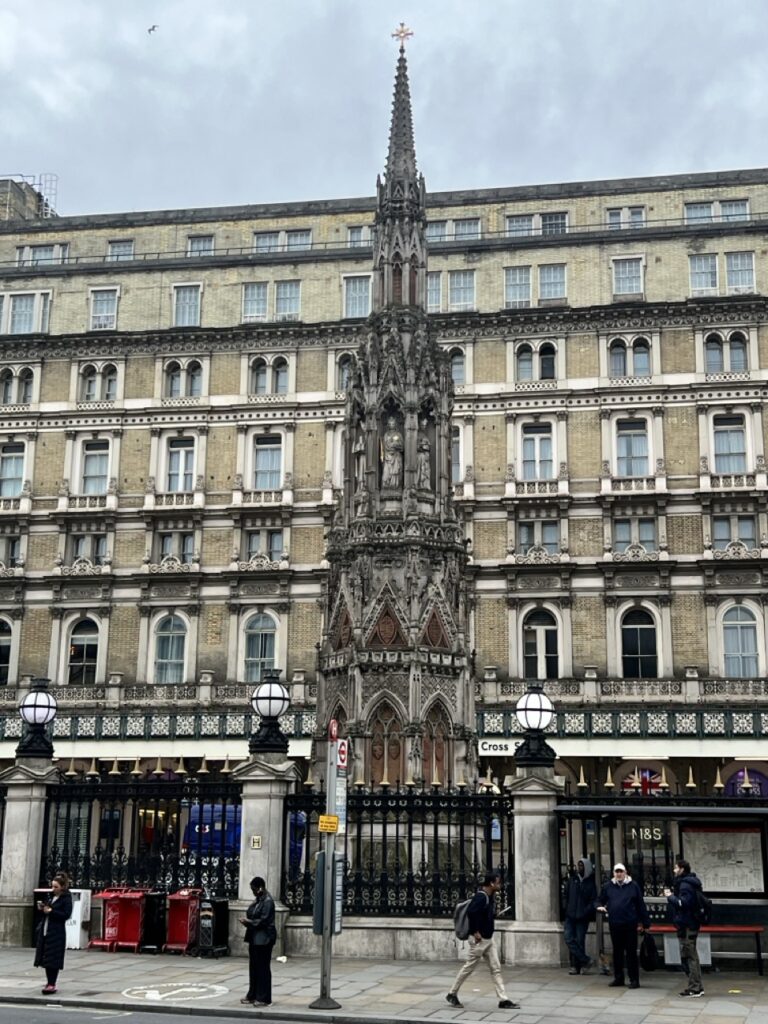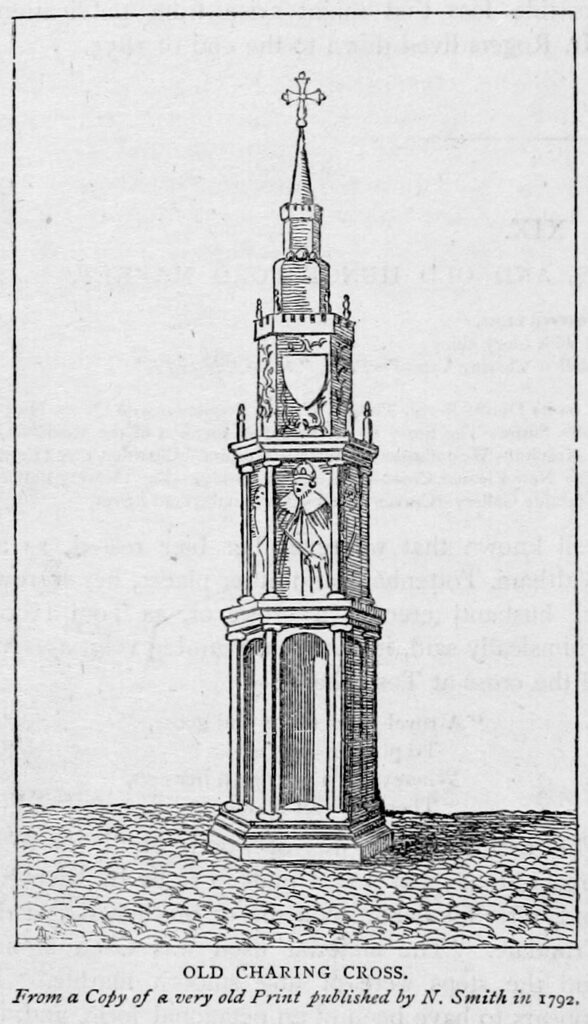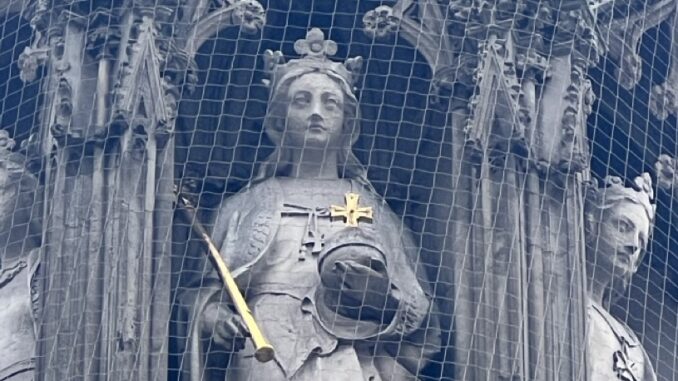
According to etymologists, the word ‘charing’ seems to come from the old English – “cerring”- meaning a bend, hence ‘charing’ appearing on many old maps, and even now featuring as the name, or part of the name, of some English villages.
In the early medieval period when London still existed within its city walls, and before Westminster had significantly expanded, there was a hamlet called Charing that sat in a bend of the Thames, and it is this that morphs into the modern placename of Charing Cross.
That “cross”, which one can see on the Agas map of 1561, was a physical structure that stood just south of where Trafalgar Square is today, on the spot where the equestrian statue of Charles I now gazes down Whitehall. (This point is the spot to/from which all distances from/to ‘London’ are measured.) It honoured Eleanor of Castile, wife of Edward I (aka “Longshanks” or “the hammer of the Scots”).
When Eleanor died in 1290, in a village close to Lincoln, her body was brought back to London for burial in Westminster Abbey, where it still resides. The 120+ mile journey south took twelve days, and wherever the coffin rested overnight Edward had a memorial cross built in her memory. Three of these – at Geddington and Hardingstone in Northamptonshire, and at Waltham Cross (n.b.) – survive largely intact. The others have disappeared or exist as fragments.
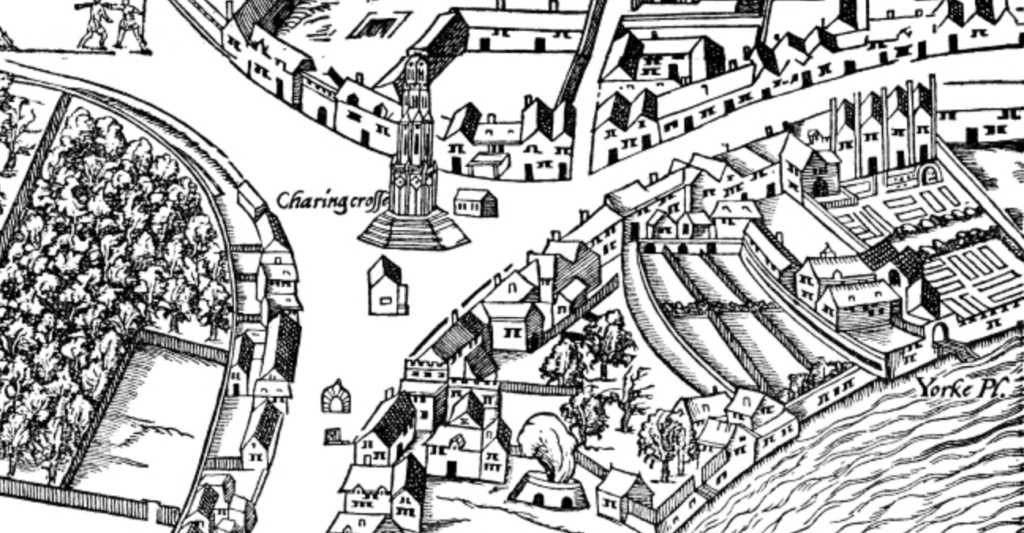
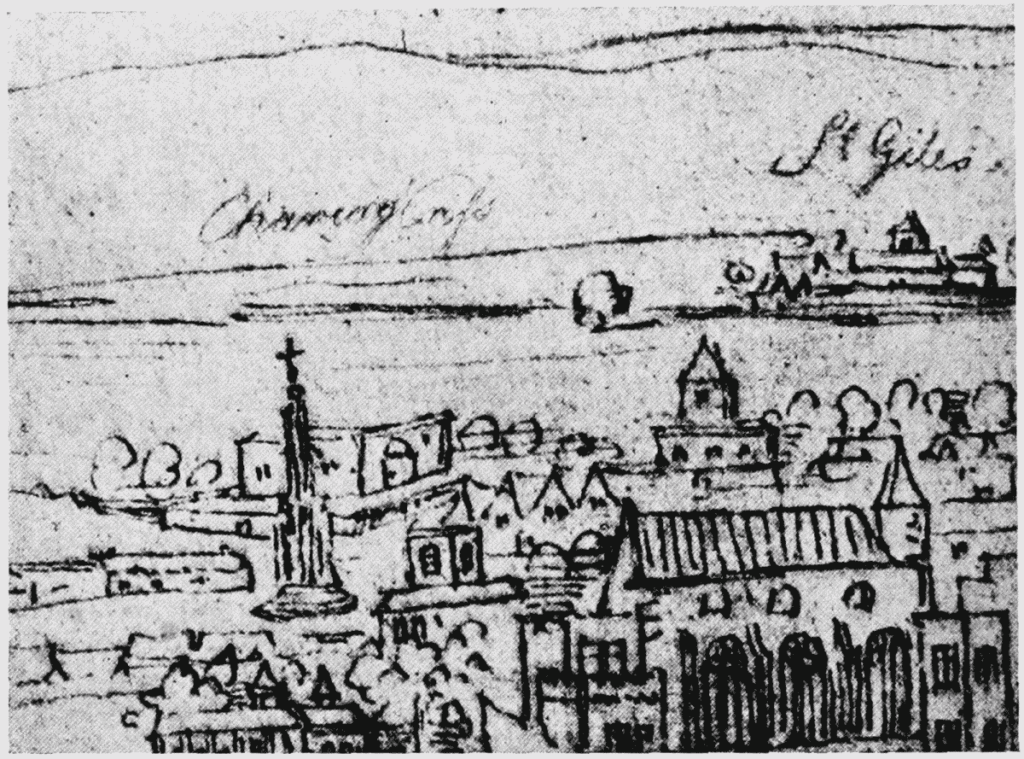
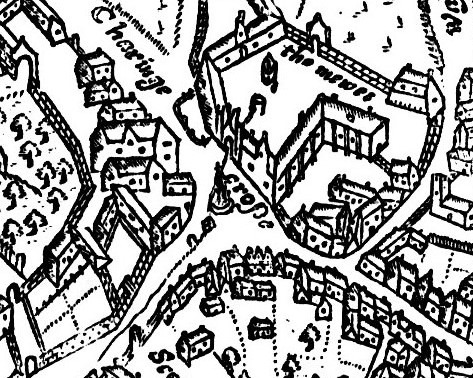
There were two in London: one in Cheapside (in the City, where the majority of the population lived), the other in Charing – hence the district becoming known as Charing Cross. Both of these seem to have fallen victim to the iconoclasm of the English Civil War; London came out for Parliament against the king and was strongly anti-catholic. Anything that smacked of ‘papist idolatry’ was likely to fall victim to the Puritan sensibilities of the city. Thus it was that the cross at Charing, the most expensive and lavish of the twelve erected, that marked the place where Eleanor’s bier spent the night before the Abbey funeral, was demolished in 1647.
What then is the monument that stands in the courtyard of Charing Cross station? Well, this is a Victorian reimagining of the medieval cross, commissioned by the South Eastern Railway Company for their newly opened station in 1865. Designed by the architect Edward Barry (son of Charles, of Houses of Parliament fame), who was also responsible for the Charing Cross hotel above the station (as well as the Royal Opera House and the Star + Garter hotel in Richmond), it is a 19th century gothic revival vision of the original. Barry’s design takes inspiration from three drawings of that 13th century cross, some of the surviving crosses, Eleanor’s tomb in the Abbey and from George Gilbert Scott’s Martyrs’ Memorial in Oxford. The sculptures on the cross, including eight of Eleanor towards the top of structure, were carved by Thomas Earp.
At 70’ high (21 metres) it is almost certainly taller than the original, and much more ornate, the Victorians never passing up the opportunity to add decorative flourishes. It is also sited some 200m from where the Eleanor cross originally stood.
Despite being restored by Network Rail in 2009/10 it still feels almost neglected in its current location, invisible against the backdrop of Barry’s hotel, and hemmed in by a wall and railings, and by cars and a bicycle racks within the courtyard. Edward I would certainly not have approved.
